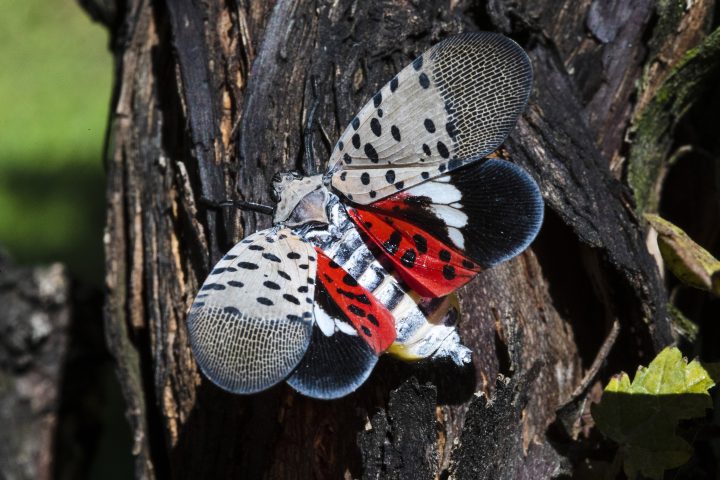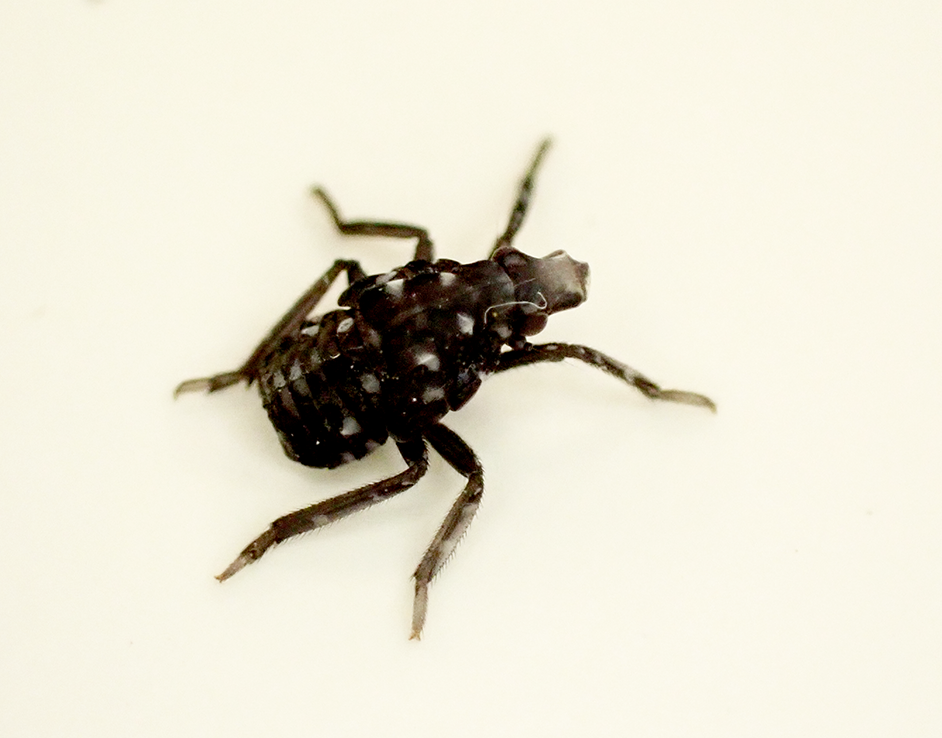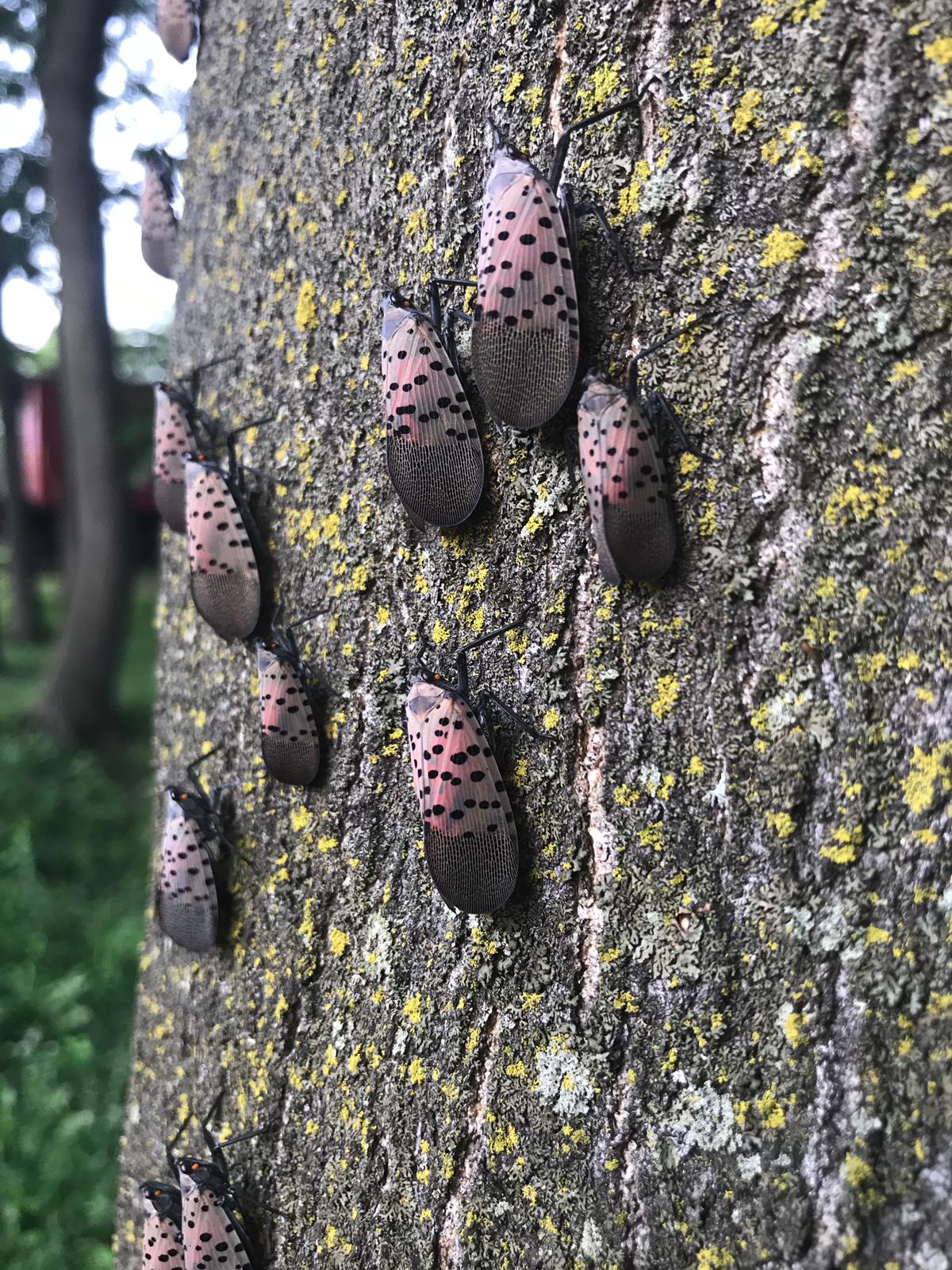A small, colourful invasive pest might be coming after your glass of wine.

A sticky situation is unfolding near Canada’s border with the United States over fears that the spotted lanternfly — a destructive insect — will cross over and slip into the country’s vineyards, maple trees and hops.
The pesky bug has not been detected in Canada so far, but researchers believe that there is a great risk that it will make its way into the country and threaten several crops and industries.
“This insect really is right on Canada’s border, so it is imminently threatening Canada and the plants that live in Canada,” said Amanda Roe, a research scientist at Natural Resources Canada.
Roe and her team have been conducting research into the spotted lanternfly at a large quarantine facility in Sault Ste. Marie, Ont.
“We feel it’s a very high probability that this is going to end up in Canada.”
The closest infestations to Canada are in Buffalo, N.Y. and Pontiac, Mich., Roe said.
The spotted lanternfly, which is native to Asia, has already spread and wreaked havoc in at least 14 different eastern U.S. states since it was first detected in North America in 2014.
According to the Canadian Food Inspection Agency, it can feed on more than 100 species of trees and plants.
In the United States, grape and grapevines have been the hardest hit, with infestations of spotted lanternfly swarming U.S. vineyards leading to vine loss and yield reductions.
There is concern the same could happen here.
“We’re predicting that the biggest impact is going to be on our grape and wine industry,” said Diana Mooij, an invasive species specialist with the Canadian Food Inspection Agency (CFIA).
“In extreme cases in the United States, there have been instances of 90 per cent yield loss in vineyards,” she told Global News.
“So this is a pest that we should be concerned about, that we are concerned about.”
If the spotted laternfly arrives in Canada, impacts could also be felt on fruit trees, nurseries, hop production and forestry, Mooij added.
The CFIA is carrying out targeted surveillance near preferred hosts, such as tree of heaven and black walnut, and will be surveying areas likely to be visited by travellers from infested areas south of the border.
In preparation for its imminent arrival, the agency is also working with government stakeholders at both the provincial and federal level, the Canadian Border Services Agency as well as industries, including grape growers, and environmental groups, to outline best management practices.
How does the spotted lanternfly spread?
Given the risks, efforts have been underway since 2018 to prevent the spread of the spotted laternfly to Canada. To date, there have been no live detections in the country.
The insects themselves have a striking and are unlike anything else present in Canada, making them easy to spot.
The babies are black with white spots or black, white and red with white spots. Adults have stark black and white wings and are bright red and yellow on their undersides.
They are not strong fliers but can move around with people fairly easily and are known to be “good hitchhikers” that hang onto vehicles, Roe said.
The eggs are usually hatched on smooth surfaces, such as rocks, trees, patio furniture, firewood and camping gear in the spring and fall.
While most invasive species are kept out of Canada during the winter because they can’t survive the weather, Roe said research suggests the spotted lanternfly can handle a fair amount of cold.
Early detection is going to be critical to stop the spread, experts say, which is why the CFIA is urging all Canadians to report any sighting of the spotted lanternfly or its egg masses by taking a photo or video if they see it and to put it into a sealable container.
“If we can find them when their populations are small and early on is going to give us the best chance of trying to deal with it,” Roe said.
For Canadians driving back from the U.S., Mooij advises them to check their cars and even go through a car wash before entering the country.
“Everyone can play a part in preventing the introduction or slowing the introduction of this pest into Canada,” she said.









Comments